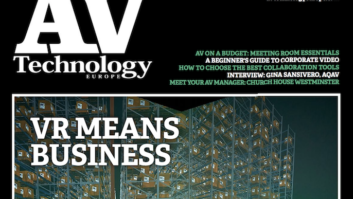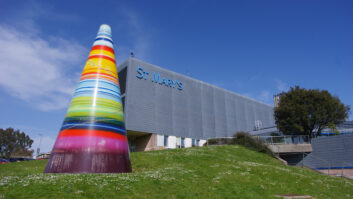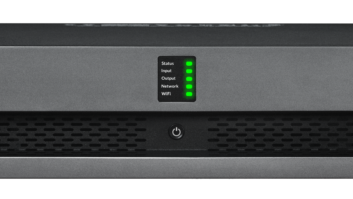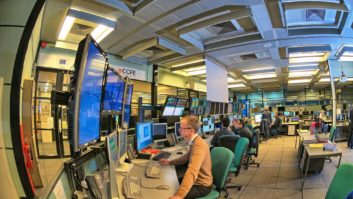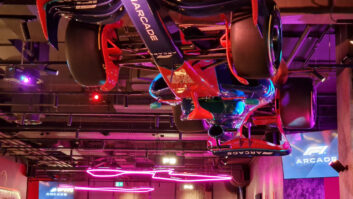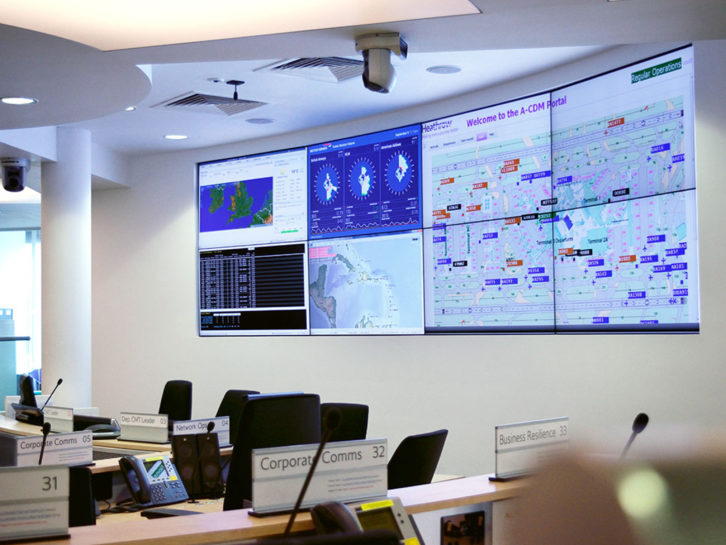
Steve Franklin, technical director at Cinos, talks about the recent merging of its UC arm and what the future holds for the integrator.
Tell us about Cinos
Cinos Limited is an audio-visual integration specialist that has been delivering projects, products and services into all verticals since 2007.
The projects we deliver range from equipment supply through to complex integrated systems and fully managed service contracts. From command and control networks, video recording systems, IPTV to video streaming and multimedia distribution, Cinos designs, engineers and project manages customer deployments. Additionally, our regional offices in Europe, North America and Asia allow us to deliver the same high standards on a global scale.
You recently folded your UC arm into the core business. What was the thinking behind this?
The merger acknowledges the market’s need for IT and AV convergence at the customer level, where AV assets are increasingly purchased as part of the complete IT solution.
We estimate that, with our customer base, we’re now seeing about 85% of procurement of AV sitting with IT as opposed to facilities. Three years ago, this was 50%. We’re adjusting our business to suit our customers’ procurement narrative and the time is right to unite our two specialist teams.
What trends are you seeing in the UC sector?
Over the past few years we’ve seen a shift from multi-channel to omni-channel in the customer experience sector. Many organisations are looking for a single platform to manage various disparate technologies – as well as the ongoing consumerisation of unified communications (UC).
Cloud, in particular Unified Communications as a Service (UCaaS) has taken centre stage and this is largely being driven by team-based collaboration. Increasingly customers are looking to move straight to a cloud-based service or are being giving guidance to utilise the cloud wherever possible. This naturally steers people towards UCaaS. What we are seeing though is that cloud doesn’t suit everyone, and can create silos of technology, for example messaging, telephony and video can become disjointed. At Cinos we’re very much of the mindset in building bridges not islands, especially when it comes to collaboration which is all about bringing people together.
We’re also seeing a rapid increase in automation, especially in the contact centre market. Businesses are looking to differentiate themselves based on the excellent service they offer to their customers, and the contact centre is their vehicle to deliver that. Automation through AI and chatbot integration, as well as predictive analytics is creating a more proactive environment rather than one that simply reacts to customer demand. Integration with premise-based AV and digital signage is enabling a more connected and interactive customer experience, whether they are in a store, a doctor’s waiting room or at home online.
Video is evolving too, from the traditional meeting rooms video continues to spill over into huddle spaces and breakout areas. The usage of video is changing too, from real-time meetings to recording, editing and sharing video content on an on-demand basis. Together with the growth in digital signage this creates a powerful combination that enables users to develop their own content, schedule and then manage how and where it is displayed.
And are there any technologies that you’re particularly excited about?
In our industry we always see new and emerging technologies come onto the market. In recent years the move to IP based technologies has been a particularly exciting development – enabling what was traditionally complex video and audio routing to be more available and accessible today.
There are also opportunities around the merging of AV and UC technologies. From small huddle spaces and breakout areas to auditoriums and lecture halls, there is an opportunity to create truly unique environments that allow staff to concentrate on getting work done rather than worrying about technology challenges.
How are you responding to the growing preference among global corporates to standardise AV across their estates?
We work with our customers to design AV systems that complement their IT strategy on a global scale. This is achieved through both our global presence as a company and the strong partnerships we have in place with manufacturers who offer a global supply chain.
What projects are you particularly proud of?
We’re very proud of our strong heritage in the UK public sector, in particular healthcare. Having provided communications systems and managed services to several NHS Trusts and acute hospitals – where communications are absolutely vital and down time is simply not an option.
Most recently Cinos completed work at the new Royal Papworth Hospital building in Cambridge. Here we designed and installed a new UC platform comprising approximately 2,000 endpoints, across the main hospital and back-office Royal Papworth House building. Integrations were the key to success here, with our service connecting to four separate communications platform and acting as the central hub, bridging together all of these technologies.
We also undertook a telephony modernisation project at Royal United Hospitals Bath. Here we migrated around 3,000 extensions from their legacy telephone system to our fully managed, hybrid cloud service – Stellaris. Built directly within the Health and Social Care Network (HSCN) Stellaris has provided Royal United Hospital Bath with a standards-based video service that they can carry out crucial Multi-Disciplinary Team meetings.
Cinos seems to have strong ethical and environmental programmes. Tell me a bit about what you’re doing here and why.
Cinos is continually striving to reduce our impact on the environment. From consistently assessing our own performance as a business to ensuring the products and solutions we deliver are environmentally friendly, we are always looking for ways to reduce our carbon footprint.
As part of this commitment, we are actively working with the National Forest with a goal of planting 2,019 trees in 2019.
We genuinely believe by applying small, positive changes we can make a big difference for everyone.
Are you facing any particular challenges in the industry?
Many organisations stipulate a ‘cloud-first’ strategy, however they aren’t always clear about how and when they want to utilise the cloud – meaning they can often find themselves steering towards a purely UCaaS solution. Our approach is to work with our customers to understand what the driver behind cloud is and how it fits the organisation’s goals. Only then can we help them consume cloud in a way which fits operationally and strategically.
Has the role of an integrator changed in recent years?
In short, yes. We have seen a shift away from a singular AV focus in recent years to one where we must consider the ‘complete solution’ which covers requirements of IT, facilities and end users. As such, we have developed and adjusted our knowledge base and skill setup to cater for this industry shift.
Why should end users employ an integrator rather than attempt to go it alone?
The skillset and experience an integrator has will always outweigh that of the majority of end users. We know how the latest technologies can work within an organisation and have experience of what works and what doesn’t. We can see the bigger picture and often provide advice on areas across multiple disciplines which sometimes the end user has not even considered
What are some of the biggest mistakes made by end users when it comes to AV?
Cost cutting and not looking at the bigger picture; this includes failing to factor in security and data protection safety nets, as well as assuming that home-based solutions are easily transferable to office environments and not considering the scalability of solutions.
Finally, what are Cinos’ plans for the future?
The merger represents an exciting time for Cinos, now and in the future. The rapid convergence of networked audio-visual technologies means that AV and IT departments are inevitably moving closer to one another, audio-visual assets are fast becoming IT assets, sharing mutual infrastructure and resources.
Our plan is to create more integrations and continue our ethos of building bridges between technology. Whether that is simply bringing customer communications platforms together or helping them devise new ways of working via collaboration-enabled business processes.
We will continue to help organisations in the ongoing struggle to provide superior service to their customers. To utilise automation and AI, and to bring true omni-channel and interact intelligently with their customers in a way which suits them. To utilise reporting and analytics to drive continual service improvement and a service which is proactively monitored and measured to deliver against their desired business outcomes.
The time is right to unite our two specialist teams and together we can become one of the leading system integrators in our industry.
